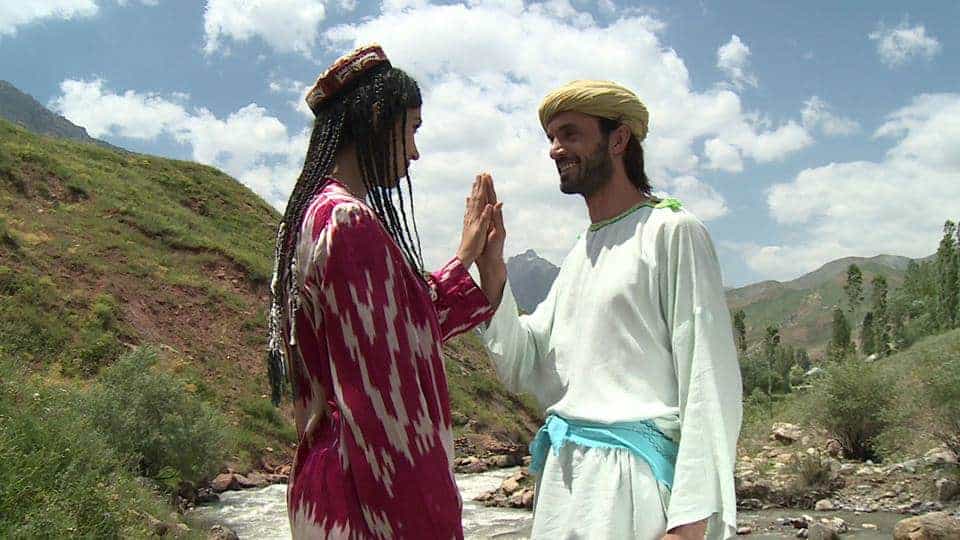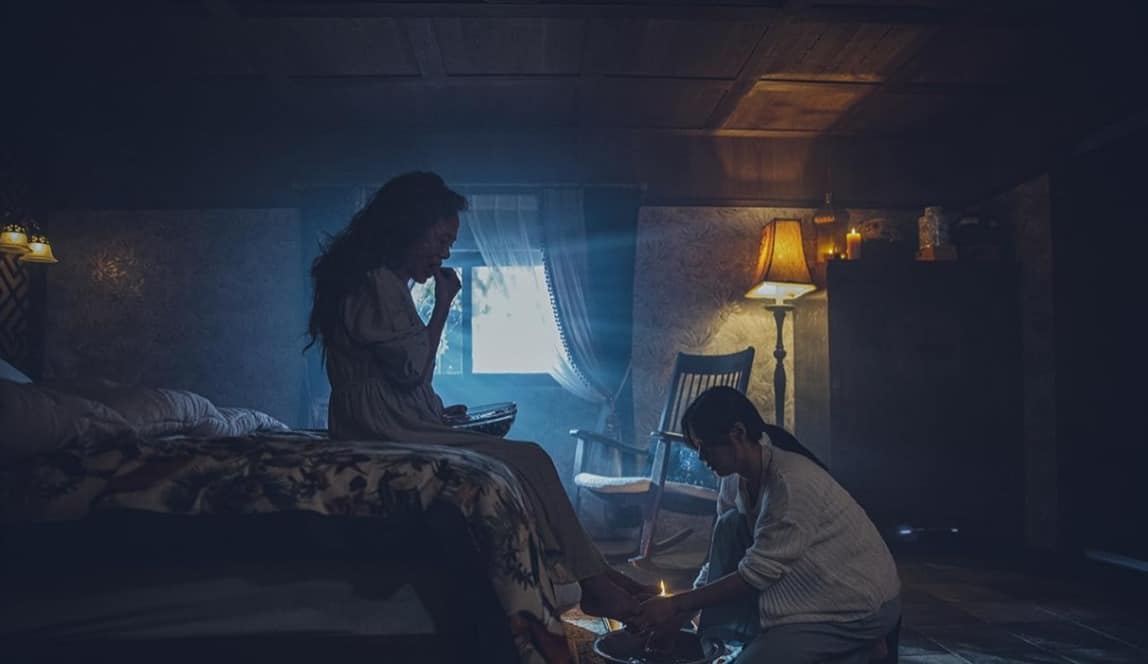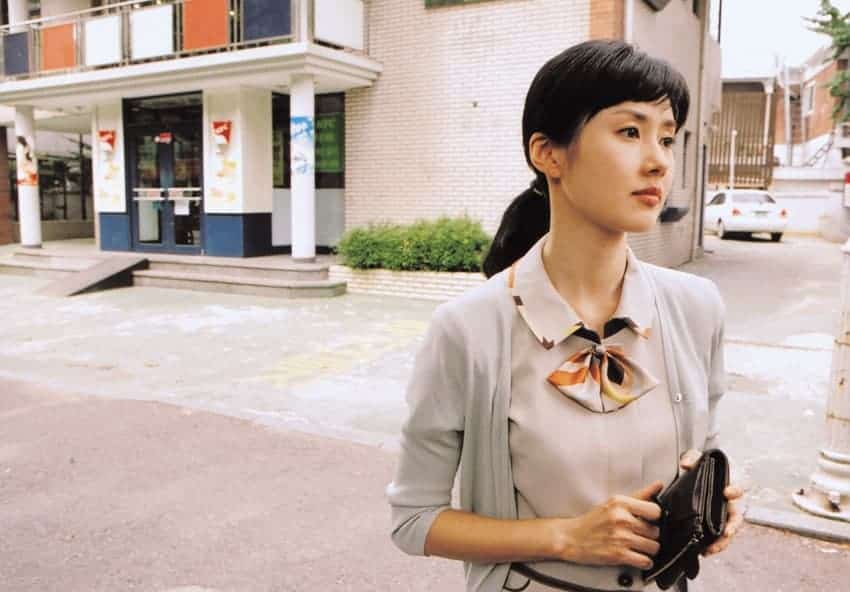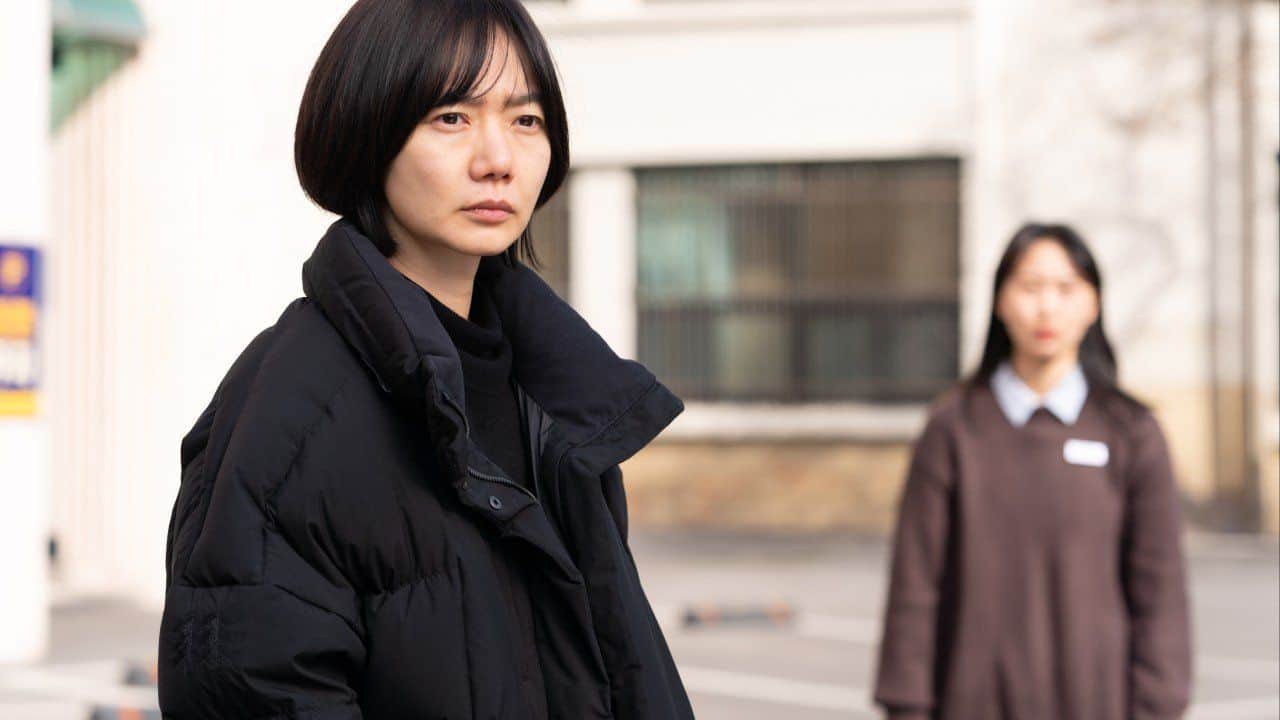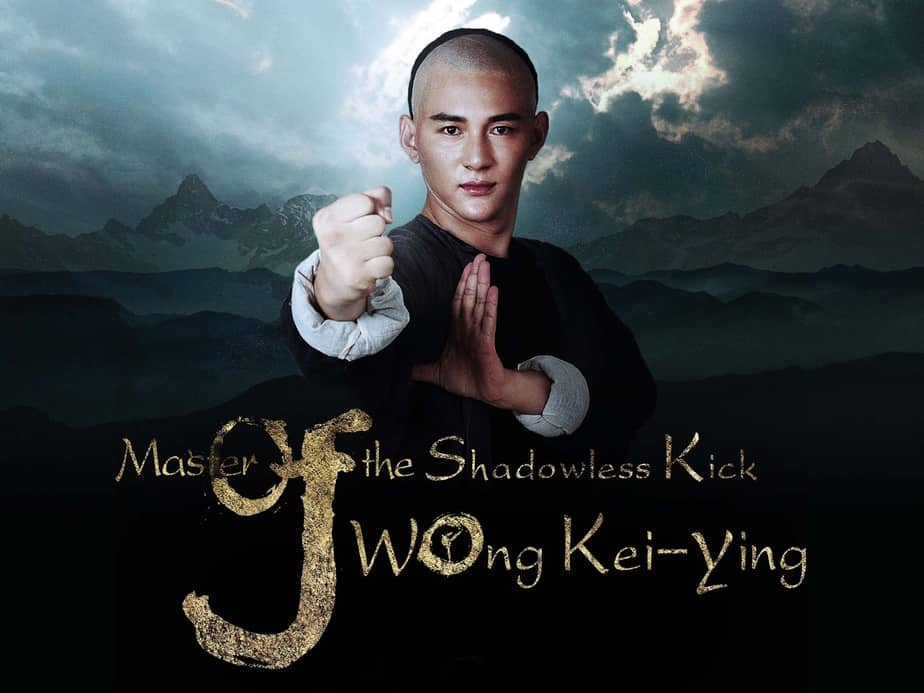It is always a pleasure to discover the cinema of Asian countries I have not explored before, and Sharofat Arabova was kind enough to introduce me to the Tajik one, through a film that is a bit difficult to get into, but once you do, you can realize its definite merits.
Based on a short story by Timur Zulfikanov, the script begins with an elderly shepherd, whose young grandson is about to discover love for the first time. According to the old man though, love is a very dangerous concept, since it always goes hand by hand with death. To make his point clearer, the old man begins telling the story of Shams and Mekhri, a married couple of dancers who used to perform in weddings, and were quite famous in the area for their abilities. However, during one performance, and due to a transient moon, Mekhri breaks the oath of faithfulness and sleeps with another man. Then an enraged Shams kills her during the night and throws her body to a river. Unable to take the burden of his actions though, he asks the leader of the kolkhoz to give him the harshest punishment, and he sends him to the uranium mines for ten years, in a place where no one survives for more than three years. All the while, a puppeteer seems to follow Shams.
Sharofat Arabova directs a film that functions as a tour guide, both of the land but also of the people, the history, and the customs of Tajikistan, an approach that results in number of sociopolitical and other kind of comments. The transition from traditionalism and communism to modernity and capitalism is one, while Arabova also seems to mock the concept of the communist leader, having the man in charge of the kolkhoz usually saying things that range from preposterous to ridiculously jingoistic.

The importance of traditions, and particularly singing, dancing and the various rituals play in the lives of Tajik people is among the main ones, with particularly the various costumes with their vivid motleyness creating a number of impressive images, which Bakhtier Yusupov's camera presents in the most artful fashion. The contrast between the ruins the rituals take place in and the style of the clothes also adds to the visual quality of the film.
Love, on the other hand, is presented through the darkest colors, in an approach that is filtered through the concept of crime and punishment, as a sentiment that can lead a man to the worst actions and subsequently, to intense regret. The ending somewhat tones down this comment, but not to a point to change it completely.
Lastly, the way the regime exploited people, sending them to their deaths in the uranium mines, whose only purpose was to provide material for an atomic bomb, is the concept that receives the harshest critique.

The narrative can be a bit confusing, particularly in the first part, before Mekhri ends up in the mine. The fact that the elderly man who narrates the story comes across Mekhri at some point, despite the fact that his story took place 50 years ago, is a bit disorienting, with the same applying to the presence of the puppeteer, which seems to transcend both time and space, ending up in many places out of nowhere. This part however, could be perceived as a metaphor for Mekhri's conscience and regret, and thus become more understandable. The fact that someone needs to have some knowledge of Tajik history and customs in order to understand the story fully is another element in the same path. Lastly, the fact that the cheating, the killing, and the carrying of the body are never actually depicted on screen, but implied, adds a bit more. This sense however, is lifted almost completely after the mines sequence, as the film becomes more easily relatable once the locality is put aside and themes of global meaning start to comment.
The tour guide part is quite good, again benefiting the most by the cinematography, but also by the wonderful music, the dancing and the overall presentation of the entertainment traditions. Furthermore, Arabova made a point of highlighting the natural beauties of the country, particularly in the various mountainous settings. Her own editing allows the film to unfold in a relatively slow, somewhat oneiric fashion that suits its general aesthetics quite nicely.

The narrative does not demand much from the actors, but Khurshed Mustafaev as Shams presents his inner torment quite convincingly, while Iso Abdurashidov as the colonel in charge of the mines and Kamariddin Mirzoev as the Head of the village give rather memorable performances,as is the case with Vakhob Dustov as the puppeteer . The fact that the women actresses do not have almost any line, could also be perceived as a social comment.
“Tasfiya” suffers a bit from the narrative and an overall locality that makes it a bit difficult for someone outside the country to understand, but as it progresses, these issues disappear and one can truly enjoy both the various comments and the beauty of the images presented.


